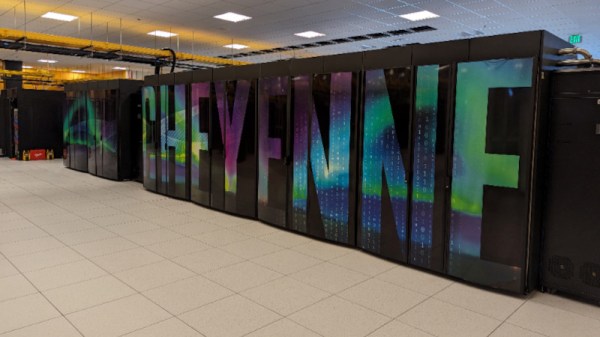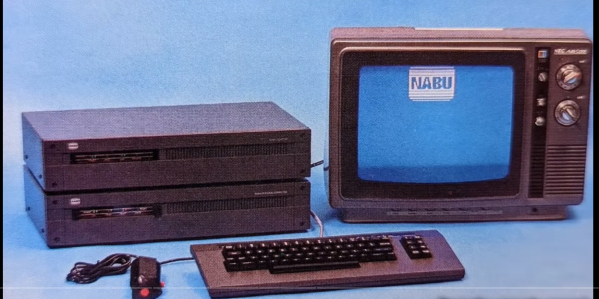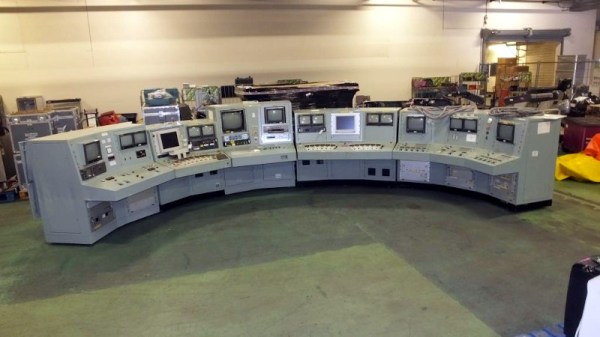In today’s “News from the Dystopia” segment, we have a story about fighting retail theft with drones. It centers on Flock Safety, a company that provides surveillance technologies, including UAVs, license plate readers, and gunshot location systems, to law enforcement agencies. Their flagship Aerodome product is a rooftop-mounted dock for a UAV that gets dispatched to a call for service and acts as an eye-in-the-sky until units can arrive on scene. Neat idea and all, and while we can see the utility of such a system in a first responder situation, the company is starting to market a similar system to retailers and other private sector industries as a way to contain costs. The retail use case, which the story stresses has not been deployed yet, would be to launch a drone upon a store’s Asset Protection team noticing someone shoplifting. Flock would then remotely pilot the drone, following the alleged thief back to their lair or hideout and coordinating with law enforcement, who then sweep in to make an arrest.
auction16 Articles
Pssst… Wanna Buy An Old Supercomputer?
If you spend your time plotting evil world domination while stroking your fluffy white cat in your super-villain lair, it’s clear that only the most high-performance in computing is going to help you achieve your dastardly aims. But computers of that scale are expensive, and not even your tame mad scientist can whistle one out of thin air. Never mind though, because if your life lacks a supercomputer, there’s one for sale right now in Wyoming.
The Cheyenne Supercomputer was ranked in the top 20 of global computing power back in 2016, when it was installed to work on atmospheric simulation and earth sciences. There’s a page containing exhaustive specs, but overall we’re talking about a Silicon Graphics ICE XA system with 8,064 processors at 18 cores each for a total of 14,5152 cores, and a not inconsequential 313,344 GB of memory. In terms of software it ran the SuSE Linux Enterprise Server OS, but don’t let that stop you from installing your distro of choice.
It’s now being sold on a government auction site in a decommissioned but able to be reactivated state, and given that it takes up a LOT of space we’re guessing that arranging the trucks to move it will cost more than the computer itself. If you’re interested it’s standing at a shade over $40,000 at the time of writing with its reserve not met, and you have until the 3rd of May to snag it.
It’s clear that the world of supercomputing is a fast-moving one and this computer has been superseded. So whoever buys it won’t be joining the big boys any time soon — even though it remains one heck of a machine by mere mortal standards. We’re curious then who would buy an old supercomputer, if anyone. Would its power consumption for that much computing make it better off as scrap metal, or is there still a place for it somewhere? Ideas? Air them in the comments.
Hackaday Links: September 10, 2023
Most of us probably have a vision of how “The Robots” will eventually rise up and deal humanity out of the game. We’ve all seen that movie, of course, and know exactly what will happen when SkyNet becomes self-aware. But for those of you thinking we’ll get off relatively easy with a quick nuclear armageddon, we’re sorry to bear the news that AI seems to have other plans for us, at least if this report of dodgy AI-generated mushroom foraging manuals is any indication. It seems that Amazon is filled with publications these days that do a pretty good job of looking like they’re written by human subject matter experts, but are actually written by ChatGPT or similar tools. That may not be such a big deal when the subject matter concerns stamp collecting or needlepoint, but when it concerns differentiating edible fungi from toxic ones, that’s a different matter. The classic example is the Death Cap mushroom (Amanita phalloides) which varies quite a bit in identifying characteristics like color and size, enough so that it’s often tough for expert mycologists to tell it apart from its edible cousins. Trouble is, when half a Death Cap contains enough toxin to kill an adult human, the margin for error is much narrower than what AI is likely to include in a foraging manual. So maybe that’s AI’s grand plan for humanity — just give us all really bad advice and let Darwin take care of the rest.
NABU PC – A 1984 Z-80 Computer You Can Buy Today
Want to hack on brand new 8-bit 1980s hardware? Until recently you needed a time machine, or deep pockets to do this. All that has recently changed with the NABU PC. A retro machine that can be bought brand new for $59.99, (plus shipping) no time machine needed.
[Adrian] has one in his Digital Basement, and breaks it all down for us. The NABU PC was a Canadian computer. Designed to connect to the cable TV network, the standard system had no internal secondary storage. You read that right; the NABU used the cable network to download and play games, view documents — just about anything you’d want to do with a computer. Cable modems back in the 80s — maybe someone did have a time machine?
Unfortunately, the NABU network failed. Not due to the PC’s hardware, but because the cable system back then was not designed for bidirectional data. While the NABU PC did see a limited release in Canada, was never widely successful. When production was shut down, the machines couldn’t be liquidated, as they didn’t do anything without the network. So in the warehouse, they sat, until this month, where can find them being sold on eBay.
So what’s inside a NABU? It starts with a Z-80 CPU sporting 64 kB of RAM. A TMS9918 handles video, while a General Instrument AY-3-8910 does the sound. There are also two UARTs. An 8251 for serial io to the keyboard and joysticks, and a high-performance UART chip to handle comms with the network adapter. The keyboard is loaded with good old ALPS switches, and [Adrian] found it rather impressive.
That’s all well and good, but what can you actually do with a NABU PC? Right now, not much. The ROM software comes up and looks for the network adapter, then complains when it doesn’t find it. This means it’s hacking time! An army of retrocomputing enthusiasts are already working on bringing back the NABU computer. Check [Adrian]’s video description for all the documentation links, and check here on Hackaday for the latest updates!
This isn’t our first time watching this sort of liquidation — remember the HP touchpad?
Continue reading “NABU PC – A 1984 Z-80 Computer You Can Buy Today”
Hackaday Links: July 18, 2021
Tell the world that something is in short supply, and you can bet that people will start reacting to that news in the ways that make the most sense to them — remember the toilet paper shortage? It’s the same with the ongoing semiconductor pinch, except that since the item in short supply is (arguably) more valuable than toilet paper, the behavior and the risks people are willing to take around it are even more extreme. Sure, we’ve seen chip hoarding, and a marked rise in counterfeit chips. But we’d imagine that this is the first time we’ve seen chip smuggling quite like this. The smuggler was caught at the Hong Kong-Macao border with 256 Core i7 and i9 processors, valued at about $123,000, strapped to his legs and chest. It reminds us more of “Midnight Express”-style heroin smuggling, although we have to say we love the fact that this guy chose a power of 2 when strapping these babies on.
Speaking of big money, let’s say you’ve pulled off a few chip heists without getting caught, and have retired from the smuggling business. What is one to do with the ill-gotten gains? Apparently, there’s a big boom in artifacts from the early days of console gaming, so you might want to start spreading some money around there. But you’d better prepare to smuggle a lot of chips: last week, an unopened Legend of Zelda cartridge for the NES sold for $870,000 at auction. Not to be outdone, two days later someone actually paid $1.56 million for a Super Mario 64 cartridge, this time apparently still in the tamperproof container that displayed it on a shelf somewhere in 1996. Nostalgia can be an expensive drug.
And it’s not just video games that are commanding high prices these days. If you’ve got a spare quarter million or so, why not bid on this real Apollo Guidance Computer and DSKY? The AGC is a non-flown machine that was installed in LTA-8, the “lunar test article” version of the Landing Module (LM) that was used for vacuum testing. If the photos in the auction listing seem familiar, it’s with good reason: this is the same AGC that was restored to operating condition by Carl Claunch, Mike Stewart, Ken Shiriff, and Marc Verdiell. Sotheby’s estimates the value at $200,000 to $300,000; in a world of billionaire megalomaniacs with dreams of space empires, we wouldn’t be surprised if a working AGC went for much, much more than that.
Meanwhile, current day space exploration is going swimmingly. Just this week NASA got the Hubble Space Telescope back online, which is great news for astronomers. And on Mars, the Ingenuity helicopter just keeps on delivering during its “operations demonstration” mission. Originally just supposed to be a technology demonstration, Ingenuity has proven to be a useful companion to the Perseverance rover, scouting out locations of interest to explore or areas of hazard to avoid. On the helicopter’s recent ninth flight, it scouted a dune field for the team, providing photographs that showed the area would be too dangerous for the rover to cross. The rover’s on-board navigation system isn’t great at seeing sand dunes, so Ingenuity’s images are a real boon to mission planners, not to mention geologists and astrobiologists, who are seeing promising areas of the ancient lakebed to explore.
And finally, most of us know all too well how audio feedback works, and all the occasions to avoid it. But what about video feedback? What happens when you point a camera that a screen displaying the image from the camera? Fractals are what happens, or at least something that looks a lot like fractals. Code Parade has been playing with what he calls “analog fractals”, which are generated just by video feedback and not by computational means. While he’d prefer to do this old school with analog video equipment, it easy enough to replicate on a computer; he even has a web page that lets you arrange a series of virtual monitors on your screen. Point a webcam at the screen, and you’re off on a fractal journey that constantly changes and shifts. Give it a try.
Psst – Wanna Buy A Control Panel From A Nuclear Power Station?
Doing the rounds today is an interesting lot in an otherwise unexciting industrial dispersal auction in Lincolnshire, UK. On sale is an “Ex nuclear plant reactor control/monitoring system“, at the time of writing attracting the low low bid of £220 ($270), but we guess it will rise. Everyone who has watched Chernobyl (or maybe The Simpsons) is now gazing awestruck at a crescent of metal consoles covered in screens, buttons, and joysticks just waiting for a staff of white-coated technicians to pore over them.
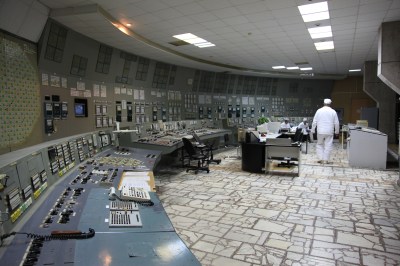
British civilian nuclear plants have tight security but they are hardly a secret, so plenty of photos are online showing their interiors. And in studying those we hit a problem, this panel doesn’t resemble any of the control panel images we can find. The first generation of Magnox (Magnetic Oxide Magnesium Non Oxidising) plants had panels covered in analogue dials and chart recorders so it’s unlikely to be one of those. The second-generation AGR (Advanced Gas-cooled Reactor) stations had similarly complex panels, and it’s evidently not one of them.
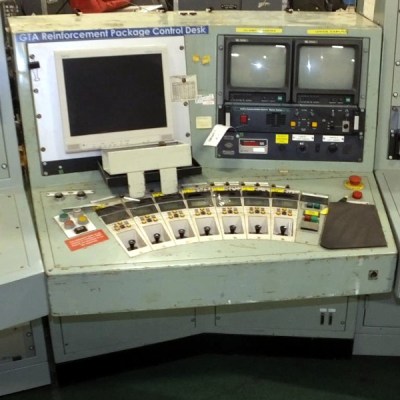 Looking closely at the photos it becomes apparent that there are a lot of camera controls and monitors, and even what looks like a uMatic video recorder. It’s definitely nuclear-related and the 1980s look of it suggests maybe it could have come from an Advanced Gas-Cooled Reactor (AGR) station, but could it be a little closer to Sector 7G than the centre of the action? Is it a video monitoring console used to keep a physical eye on its operation?
Looking closely at the photos it becomes apparent that there are a lot of camera controls and monitors, and even what looks like a uMatic video recorder. It’s definitely nuclear-related and the 1980s look of it suggests maybe it could have come from an Advanced Gas-Cooled Reactor (AGR) station, but could it be a little closer to Sector 7G than the centre of the action? Is it a video monitoring console used to keep a physical eye on its operation?
Be careful if you bid, you could end up with a rather cool but absurdly large 1980s CCTV system. Can any of our readers shed any light on the matter?
Thanks [Gregg “Cabe” Bond] for the tip.
How 5G Is Likely To Put Weather Forecasting At Risk
If the great Samuel Clemens were alive today, he might modify the famous meteorological quip often attributed to him to read, “Everyone complains about weather forecasts, but I can’t for the life of me see why!” In his day, weather forecasting was as much guesswork as anything else, reading the clouds and the winds to see what was likely to happen in the next few hours, and being wrong as often as right. Telegraphy and better instrumentation made forecasting more scientific and improved accuracy steadily over the decades, to the point where we now enjoy 10-day forecasts that are at least good for planning purposes and three-day outlooks that are right about 90% of the time.
What made this increase in accuracy possible is supercomputers running sophisticated weather modeling software. But models are only as good as the raw data that they use as input, and increasingly that data comes from on high. A constellation of satellites with extremely sensitive sensors watches the planet, detecting changes in winds and water vapor in near real-time. But if the people tasked with running these systems are to be believed, the quality of that data faces a mortal threat from an unlikely foe: the rollout of 5G cellular networks.
Continue reading “How 5G Is Likely To Put Weather Forecasting At Risk”


